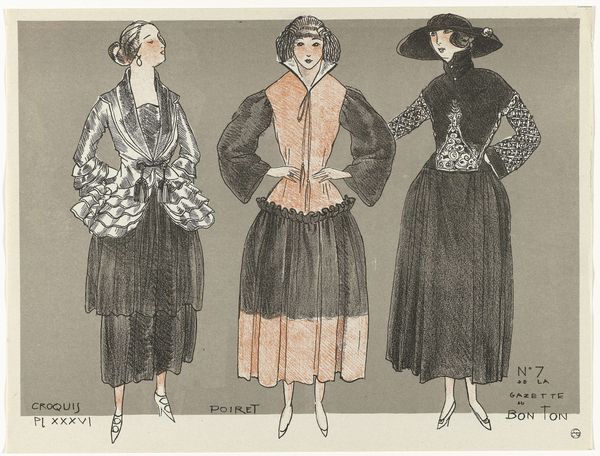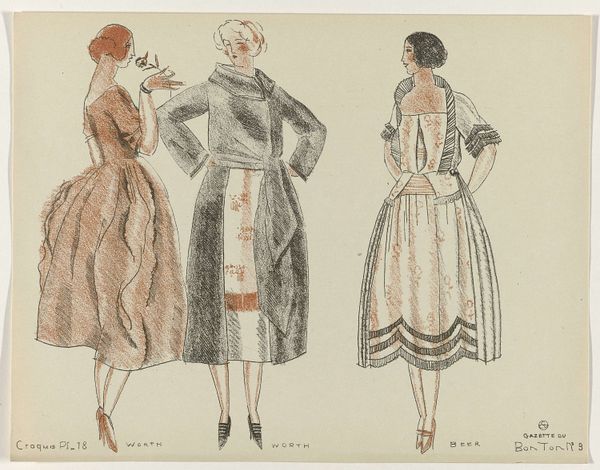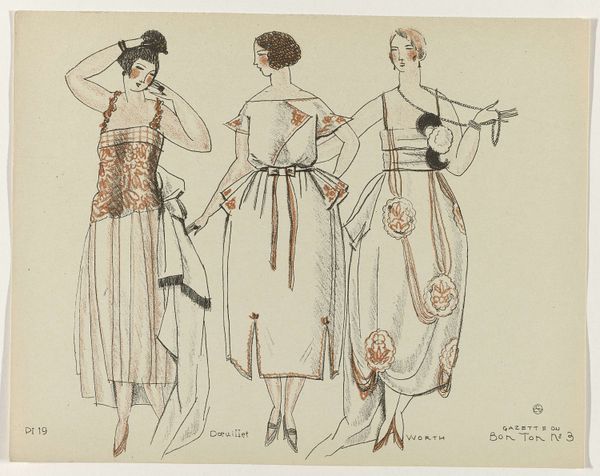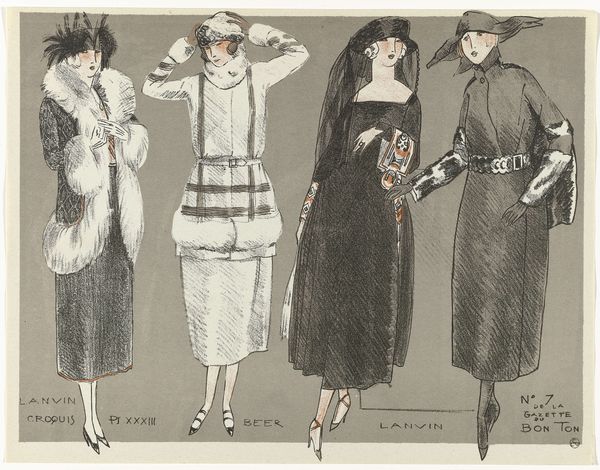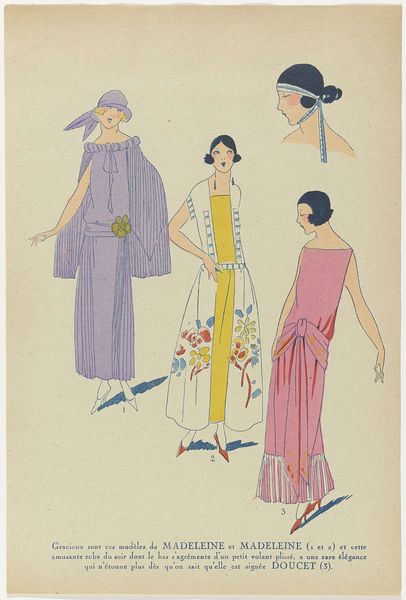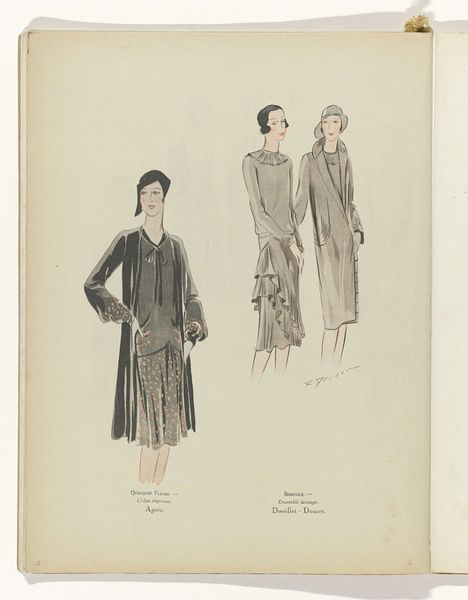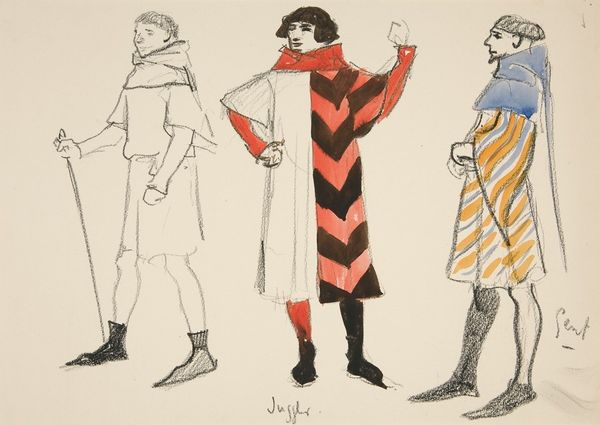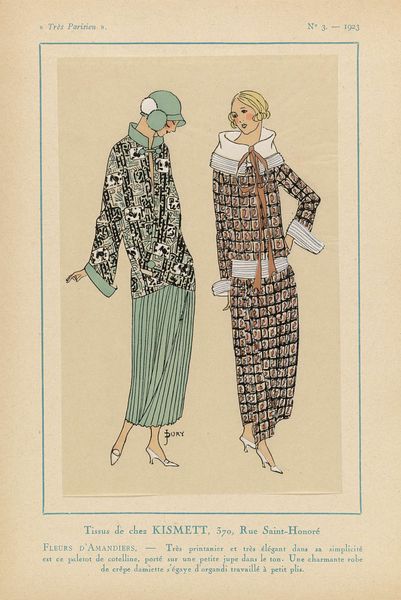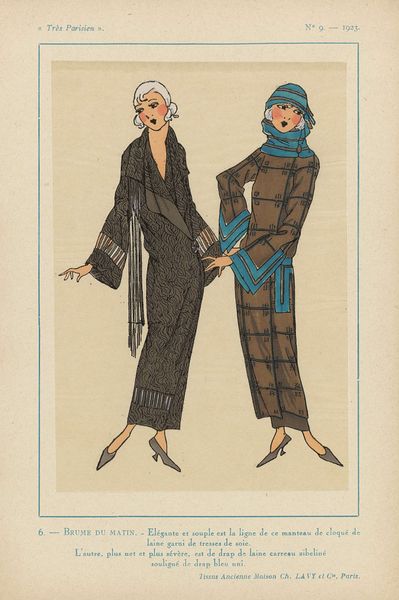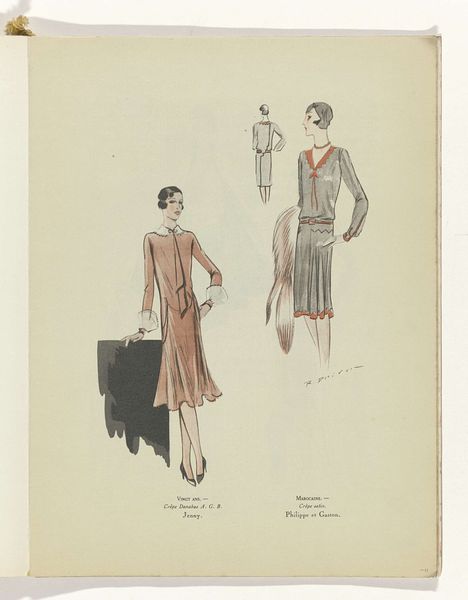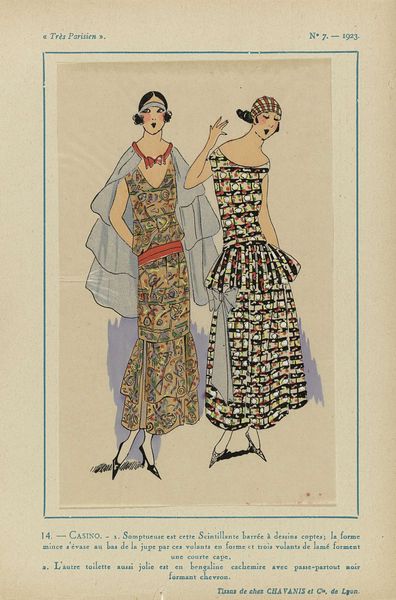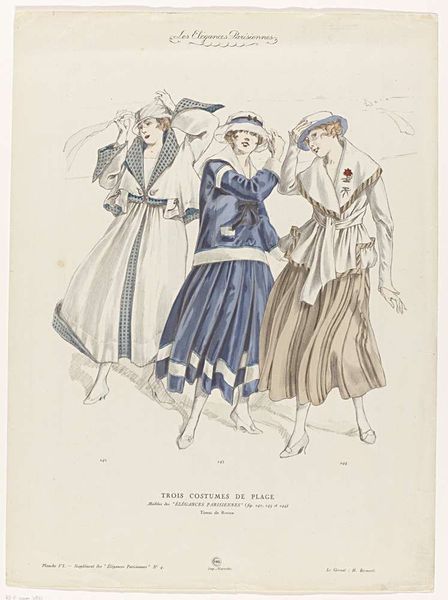
drawing, mixed-media
#
portrait
#
fashion design
#
art-deco
#
drawing
#
underwear fashion design
#
mixed-media
#
fashion mockup
#
collage layering style
#
fashion and textile design
#
historical fashion
#
traditional dress
#
fashion sketch
#
dress
#
costume design
#
clothing design
Dimensions: height 191 mm, width 247 mm
Copyright: Rijks Museum: Open Domain
Editor: This mixed-media drawing from 1920, titled *Gazette du Bon Ton, No. 3, Croquis Pl. 20: Jeanne Lanvin / Beer*, features fashion designs from that era. It feels very much of its time with a clear art deco influence, doesn’t it? How do you interpret this work as an Iconographer? Curator: I see reflections of cultural memory embedded within these images, particularly concerning the shifting roles of women. Note how the designs, while seemingly decorative, suggest a move toward simpler, more functional forms. These clothing designs represent liberation from more restrictive garments, paralleling women’s evolving social positions post-World War I. What sort of impact did these images have at the time? Editor: I can imagine that these images really made an impact. I love that the rendering of Lanvin and Beer includes the designers' signatures, that helps a great deal, no? Curator: Precisely. Signatures acted almost like cultural stamps of approval. By intertwining their identities with the visual vocabulary of modern fashion, the artists signaled societal change through the lens of fashion as wearable art, ready to be culturally consumed and imitated. Are these patterns random to you? Editor: They look a bit like Greek key patterns but simplified... Curator: Exactly! Consider that Greek keys and geometric forms often symbolized order and reason. The use of similar imagery here is no accident—fashion houses may very well have used classical elements to communicate refinement while simultaneously embracing the modern streamlined silhouettes. It presents order within progress. Editor: That's fascinating! I had never thought about fashion playing that significant of a role, representing liberation and a sense of order, and incorporating old motifs for an additional flair. Curator: Indeed. In decoding such fashion plates, we gain insights into both cultural anxieties and aspirations. Cultural symbols never exist in isolation; they represent a fluid dialogue between past and present.
Comments
No comments
Be the first to comment and join the conversation on the ultimate creative platform.
